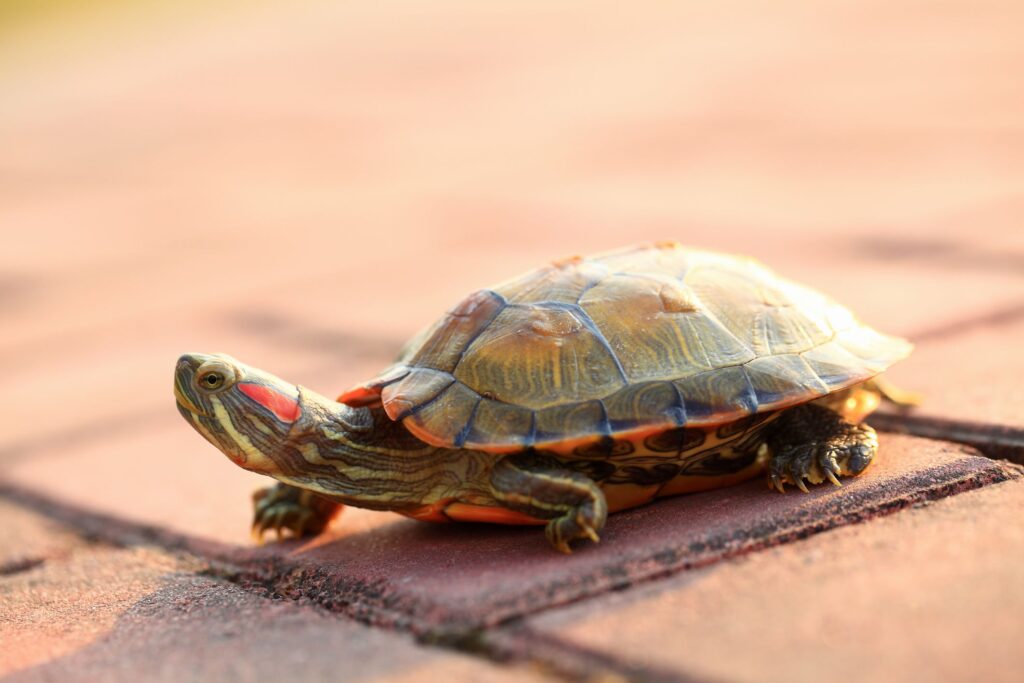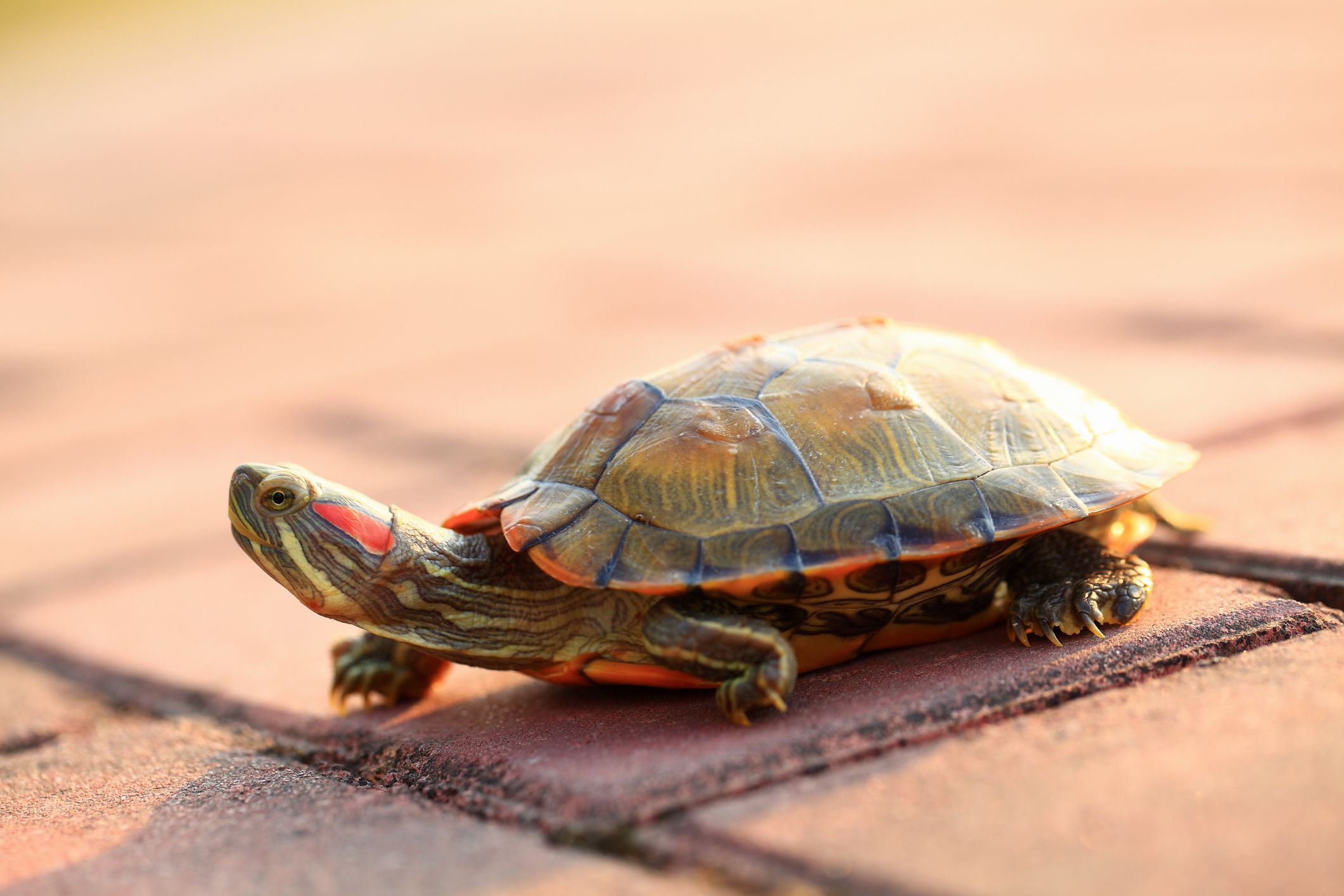So you’ve found some cute baby turtles and you’re excited to bring them home. But before you rush off, there are a few things you need to know about safely transporting them. In this article, we’ll provide you with some helpful guidelines and precautions to ensure that your little reptilian friends have a stress-free journey to their new habitat. From choosing the right container to maintaining the proper temperature, we’ve got you covered. So let’s dive in and make sure these baby turtles arrive safely and happily at their new home.
Choosing the Proper Container
When it comes to transporting baby turtles, one of the most important considerations is choosing the proper container. The container you select should provide a secure and comfortable environment for the turtles during the journey. There are a few key factors to consider when choosing the right container.
Selecting the Right Size
The size of the container is crucial in ensuring the safety and well-being of the baby turtles. Too small of a container can lead to overcrowding and stress, while a container that is too large can make it difficult for the turtles to stay stable during transport. It is recommended to choose a container that is just the right size to comfortably accommodate the number of turtles you are transporting.
Choosing a Suitable Material
Another important consideration is the material of the container. Ideally, you should opt for a sturdy and leak-proof material that will safeguard the turtles and prevent any accidents or injuries during transportation. Plastic containers are often a popular choice, as they are lightweight, easy to clean, and durable.
Ensuring Proper Ventilation
Proper ventilation is crucial to maintain a healthy environment for the baby turtles during transport. Good airflow helps prevent the buildup of harmful gases and ensures that the turtles have a constant supply of fresh air. When selecting a container, make sure it has sufficient ventilation holes or openings to promote proper airflow.
Providing Secure Latches
To prevent escape or accidental opening, it is essential to choose a container with secure latches. Baby turtles are curious and may attempt to explore their surroundings during transportation. Ensuring that the container has tight and reliable latches will prevent any escapes and keep the turtles safe throughout the journey.
Preparing the Transport Container
Before placing the baby turtles in the transport container, it is crucial to properly prepare it to ensure their safety and well-being. Follow these steps to adequately prepare the container.
Cleaning and Disinfecting
The first step in preparing the transport container is to clean and disinfect it thoroughly. Use a mild soap or reptile-safe cleaner to clean the container, making sure to remove any dirt, debris, or residue. After cleaning, disinfect the container following the manufacturer’s instructions or by using a reptile-safe disinfectant. This helps eliminate any potential pathogens that could harm the turtles.
Adding a Layer of Moisture
Adding a layer of moisture to the transport container is beneficial in maintaining a suitable humidity level for the turtles. You can place a damp paper towel or a small container of water inside the container to provide some moisture. This helps prevent dehydration and keeps the turtles comfortable during the journey.
Creating a Safe and Comfortable Environment
To ensure the baby turtles remain safe and comfortable, it is essential to create an environment that mimics their natural habitat as closely as possible. This can be achieved by adding a layer of substrate, such as damp moss or coconut fiber, to the bottom of the container. This substrate not only provides a soft surface for the turtles but also helps maintain a suitable humidity level.
Including a Hiding Spot
Baby turtles, like their adult counterparts, appreciate having a hiding spot where they can retreat to feel safe and secure. You can create a hiding spot in the transport container by placing a small cave or shelter, such as a hollow log or a plastic plant, inside. This gives the turtles a place to hide and reduces stress during transportation.
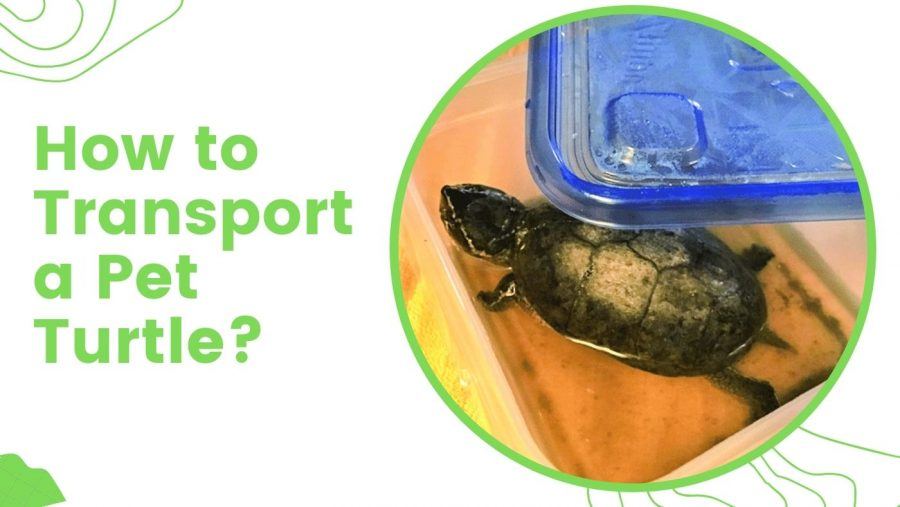
Handling the Baby Turtles
Proper handling of baby turtles is crucial to minimize stress and ensure their safety throughout the transportation process. Follow these guidelines when handling baby turtles.
Washing Hands and Using Sanitizer
Before handling the baby turtles, it is essential to wash your hands thoroughly with soap and warm water. This helps remove any potential harmful bacteria or pathogens that could be transferred to the turtles. Additionally, using a reptile-safe hand sanitizer can provide an extra layer of protection and ensure proper hygiene.
Using a Soft, Clean Cloth
When handling baby turtles, it is important to use a soft and clean cloth as a barrier between your hands and their delicate shells. This helps prevent any accidental damage or injury to the turtles’ shells. Avoid using rough materials that could scratch or harm the turtles.
Avoiding Excessive Handling
While it may be tempting to handle the baby turtles frequently during transport, it is important to minimize excessive handling to reduce stress. Baby turtles are delicate creatures and can become easily stressed or overwhelmed. Limit handling to necessary tasks such as cleaning or checking on their well-being.
Supporting the Turtles Properly
When handling baby turtles, make sure to support their entire body and avoid putting pressure on their shells. Gently cradle the turtle in your hands, making sure to support both the front and hind limbs. Avoid squeezing or gripping the turtle tightly, as this can cause injury or stress.
Maintaining Proper Temperature
Maintaining the proper temperature is vital for the health and well-being of baby turtles during transport. Fluctuations in temperature can cause stress and impact their overall health. Follow these guidelines to ensure the turtles remain in a suitable temperature range.
Monitoring Ambient Temperature
Throughout the journey, it is important to monitor the ambient temperature inside the transport container. Use a reliable thermometer to keep track of the temperature. Baby turtles thrive in temperatures around 75-85°F (24-29°C), so it is essential to ensure the container remains within this range.
Using Heat Packs or Warm Water Bottles
To maintain a suitable temperature, especially during colder weather or longer trips, you can use heat packs or warm water bottles inside the transport container. These heat sources should be placed outside the turtle’s reach and wrapped in cloth to prevent direct contact. Regularly check the temperature to avoid any overheating.
Insulating the Transport Container
To further insulate the transport container and maintain a stable temperature, consider adding additional layers of insulation, such as towels or blankets, around the container. This helps to minimize heat loss during colder weather and prevents excessive heat buildup in warmer conditions. Regularly monitor the temperature to ensure it remains within the optimal range.
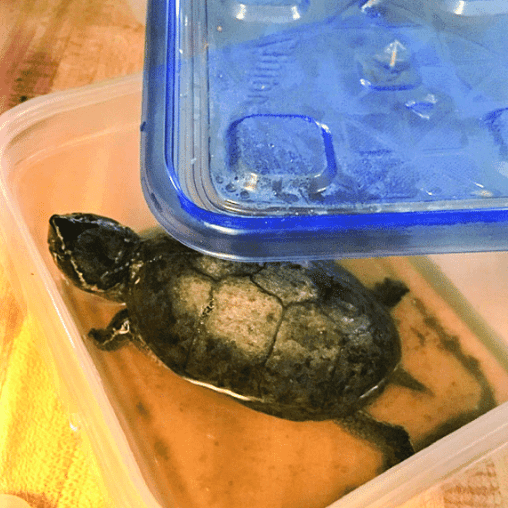
Ensuring Adequate Humidity
Proper humidity levels are essential for the health and well-being of baby turtles. Without sufficient humidity, the turtles can become dehydrated and experience respiratory issues. Follow these guidelines to ensure adequate humidity during transport.
Spraying Water Regularly
To maintain proper humidity levels, you can spray water into the transport container periodically. Use a clean spray bottle filled with dechlorinated water and mist the container’s interior without directly spraying the turtles. This helps create a humid environment and prevents dehydration.
Wrapping the Container in Damp Towels
Another method to provide adequate humidity is by wrapping the transport container in damp towels. The towels will help retain moisture and create a humid microclimate within the container. Ensure the towels are damp but not wet to avoid over-saturation, which could be harmful to the turtles.
Avoiding Over-Saturation
While humidity is crucial for baby turtles, it is important to avoid over-saturation. Excessive moisture can lead to respiratory problems and skin issues in turtles. Regularly monitor the humidity level and adjust the amount of water sprayed or the dampness of the towels accordingly to maintain a healthy balance.
Minimizing Stress During Transportation
Transportation can be a stressful experience for baby turtles. Minimizing stress is essential to ensure their well-being throughout the journey. Follow these guidelines to minimize stress during transportation.
Avoiding Loud Noises and Vibrations
Baby turtles are sensitive to loud noises and vibrations, which can cause stress and anxiety. During transportation, try to minimize these factors by choosing a quiet route and avoiding areas with heavy traffic or construction zones. Keeping the environment as calm and peaceful as possible will help reduce stress for the turtles.
Keeping the Transport Container Stable
Another way to minimize stress is by keeping the transport container stable during the journey. Secure it in a place where it won’t be jostled or tipped over easily. Smooth driving and gradual maneuvers can help prevent unnecessary movement of the container, providing a more stable environment for the turtles.
Covering the Container to Reduce Light Exposure
Light exposure should be minimized during transportation to replicate the turtles’ natural habits. Excessive light can disrupt their sleep patterns and add stress to their journey. Covering the transport container with a dark cloth or towel helps reduce light exposure and creates a calmer environment for the baby turtles.
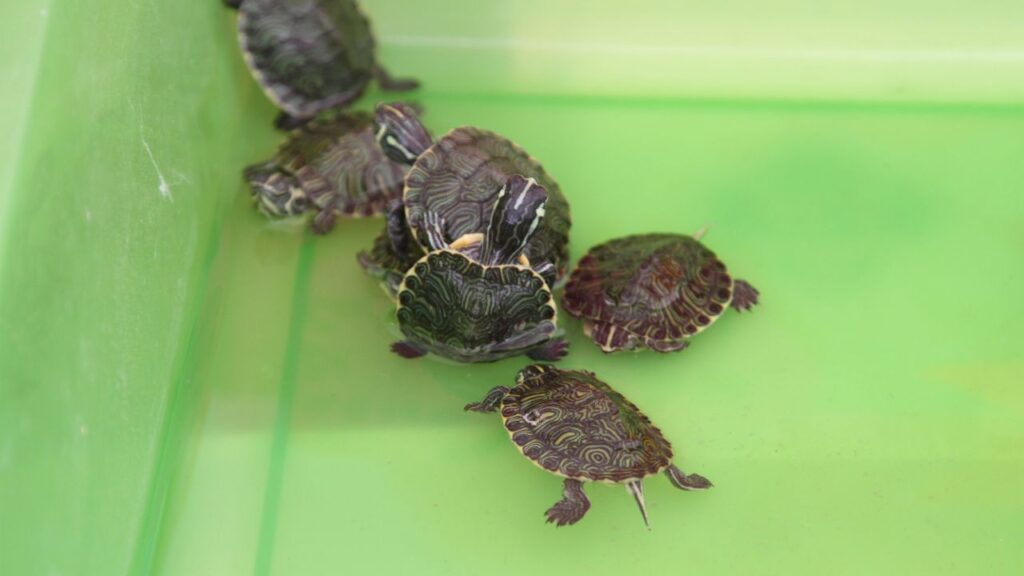
Planning the Route and Duration
When transporting baby turtles, careful planning of the route and duration is crucial to ensure their safety and well-being. Follow these guidelines to plan the journey effectively.
Choosing the Shortest and Safest Route
Selecting the shortest and safest route is essential to minimize the time spent in transit and reduce the chances of accidents or delays. Plan your journey in advance, considering the availability of well-maintained roads with minimal traffic and potential road hazards.
Avoiding Extreme Temperatures
When planning your route, it is important to avoid extreme temperatures. Extremely hot or cold conditions can be detrimental to the baby turtles’ well-being. Try to plan your journey during temperate periods and avoid traveling during peak summer or winter months.
Considering the Time of Day
The time of day can also impact the transport experience for baby turtles. It is generally best to plan your journey during the cooler parts of the day, such as early morning or late evening. Avoid traveling during the hottest hours of the day when temperatures can peak and stress the turtles.
Minimizing Stops and Detours
To reduce the overall duration of the journey and minimize stress for the baby turtles, it is important to minimize stops and detours. Plan your route strategically, ensuring that you have all necessary supplies and accommodations along the way to avoid unnecessary stops or delays.
Ensuring Safety During Transportation
Ensuring the safety of baby turtles during transportation should be a top priority. Follow these guidelines to maintain a safe environment for the turtles throughout the journey.
Securing the Transport Container
Properly securing the transport container is essential to prevent accidents or escapes during transit. Make sure the container is tightly latched and secured to avoid any sudden opening or spillage. If using a larger container, consider using straps or seat belts to further secure it in place.
Protecting from Extreme Temperatures
Extreme temperatures can pose a significant risk to the well-being of baby turtles during transportation. Take precautions to protect the container from excessive heat or cold. Avoid placing the container in direct sunlight and ensure it is shielded from extreme temperature fluctuations.
Avoiding Exposure to Sunlight
Direct exposure to sunlight can cause overheating and stress for baby turtles. During transportation, it is important to keep the container out of direct sunlight to prevent overheating. If necessary, use shades or covers to shield the container from direct sunlight.
Shielding from Bumps and Impact
During the journey, the transport container may be subjected to bumps and impact. Take precautions to cushion the container and minimize the effects of any sudden jolts. Placing the container on a stable surface and surrounding it with soft materials, such as towels or cushions, can help absorb any impact and keep the turtles safe.
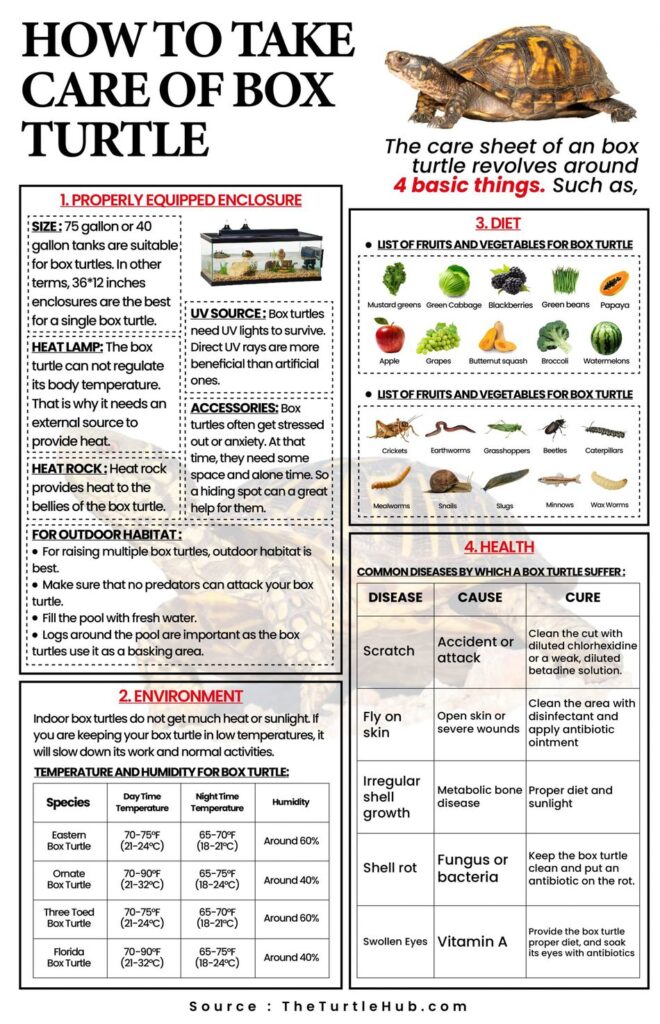
Monitoring the Turtles During Transport
Constant monitoring of baby turtles during transportation is crucial to ensure their health and well-being. Follow these guidelines to keep a close eye on the turtles throughout the journey.
Regularly Checking on the Turtles
Check on the baby turtles regularly during stops or breaks along the journey. Look for any signs of distress, injury, or unusual behavior. Ensure that they have access to water and that the humidity and temperature levels are within the appropriate range.
Monitoring Temperature and Humidity
Keep a close eye on the temperature and humidity levels inside the transport container throughout the journey. Regularly check the thermometer and adjust the environment if needed to maintain a suitable temperature and humidity range.
Noting any Unusual Behavior or Health Issues
Observe the baby turtles closely for any signs of unusual behavior or health issues. Symptoms such as lack of appetite, lethargy, excessive scratching, or labored breathing may indicate an underlying health problem. If you notice any concerning signs, it is important to seek professional advice promptly.
Getting Professional Advice
Transporting baby turtles can be a complex task, and it may be beneficial to seek professional advice to ensure their safety and well-being. Consider the following options for expert guidance.
Consulting with a Veterinarian
Before undertaking a long journey with baby turtles, it is advisable to consult with a veterinarian who specializes in reptile care. They can provide valuable advice on proper transportation techniques, as well as any specific considerations for your baby turtles’ health and well-being.
Seeking Guidance from Reptile Experts
Reptile experts and enthusiasts can also provide valuable insights and tips for safely transporting baby turtles. Online forums, social media groups, and reptile-specific organizations can be excellent sources of information and advice. Engage with the reptile community to seek guidance and learn from their experiences.
By following these guidelines and taking the necessary precautions, you can ensure the safe and comfortable transport of baby turtles. Remember that each species may have specific requirements, so it is important to research and understand the needs of your particular baby turtles before embarking on a journey. Transporting them with care and attention will help minimize stress and contribute to their overall well-being.
